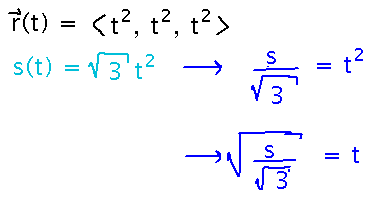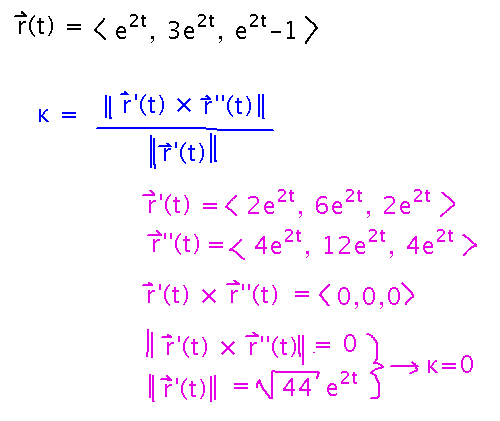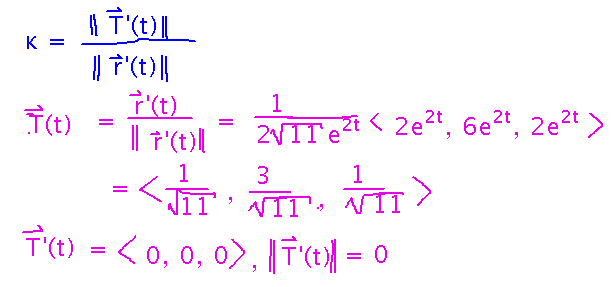Misc
First Hour Exam
Friday, October 5, in class.
Covers material since the beginning of the semester (e.g., 3D space; lines, planes, and other surfaces; rectangular, polar, and cylindrical coordinates; vectors and their operations; vector valued functions and their calculus). Arc length and curvature may appear, but will probably be to some extent deferred to a future exam.
3 to 5 short-answer questions.
You’ll have the full 50-minute class period.
Open book, notes, computer as a reference or calculator; closed person.
I’ll make a sample exam available.
Questions?
Can I extend the due date for Problem set 5? Yes, grade-by date is now Thursday Oct. 11.
Arc Length Parameterization
Friday we started finding an arc length parameterization for the curve r(t) = 〈 t2, t2, t2 〉which is a straight line, but one in which distance from the origin changes faster as t gets larger. The first step was to find the arc length function. Now we need to use it as an equation for s in terms of t, and rearrange that equation to get t in terms of s:

Then we can substitute that result for t in the original parameterization to get a parameterization in terms of distance from the origin (or some other reference point), i.e., a parameterization in terms of arc length.

Curvature
The last two subsections of section 3.3.
Find Curvature
Example: r(t) = 〈 e2t, 3e2t, e2t-1 〉. Try using the formula involving cross products of derivatives of r:

A curvature of 0 means that this “curve” is a straight line. Reparameterizing by making the common e2t a variable makes this clearer:

Can Mathematica find curvature for you? It turns out it can, a short Google search
uncovers the ArcCurvature function. Here’s an example notebook.
There are other formulas for curvature, one that I find interesting being in terms of the unit tangent vector and the derivative of r. You can analyze the r(t) = 〈 e2t, 3e2t, e2t-1 〉curve using it like so...

Next
The principal unit normal vector.
See (you should already have read) “The Normal and Binormal Vectors” in section 3.3.